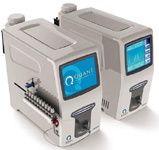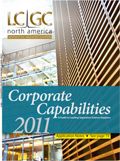Quant Technologies
Quant Technologies is a leader in the development and manufacture of Aerosol-based HPLC detectors.
Company Description
Quant Technologies is a leader in the development and manufacture of aerosol-based HPLC detectors. They have a distinguished history of bringing to market high quality, innovative and affordable aerosol instrumentation for applications in basic and applied research, environmental monitoring, process and quality control, and occupational health and safety.

Chief Chromatographic Techniques Supported
HPLC detectors used for applications in:
- UHPLC
- SFC
- SEC
- GPC
Markets Served
- Pharmaceutical
- Specialty chemical
- Food and beverage
- Cosmetic
- Life science
- Academic research
- Biofuels
Major Products/Services
Quant Technologies, LLC offers the NQAD line of new and completely different aerosol-based detectors for HPLC and UHPLC. The NQAD's high sensitivity helps analytical chemists to accurately identify and measure extremely low concentrations of compounds. It does not require a chromaphore or have restrictions on pH or chemical properties. The NQAD also offers a wide dynamic range with superior linearity when compared to other aerosol-based detectors. This superior performance will aid pharmaceutical development where impurities or drug degradation can be detected in the same run with minimal sample preparation.
Facilities
Quant Technologies maintains a global network of sales, service, technical, and applications support specialists. The well-equipped Quant Technologies engineering development and test laboratory includes equipment for electronic design, optics testing, 3D mechanical modeling, aerosol measurement, firmware, and software development. In addition to manufacturing facilities, the Quant Technologies headquarters houses research and development facilities for applications development, testing, and analysis.

Quant Technologies
1463 94th Lane NE
Blaine, MN 55449
TELEPHONE
(763) 398-0508
FAX
(763) 398-0480
WEB SITE
YEAR FOUNDED
2003

New Method Explored for the Detection of CECs in Crops Irrigated with Contaminated Water
April 30th 2025This new study presents a validated QuEChERS–LC-MS/MS method for detecting eight persistent, mobile, and toxic substances in escarole, tomatoes, and tomato leaves irrigated with contaminated water.

.png&w=3840&q=75)

.png&w=3840&q=75)



.png&w=3840&q=75)



.png&w=3840&q=75)


















